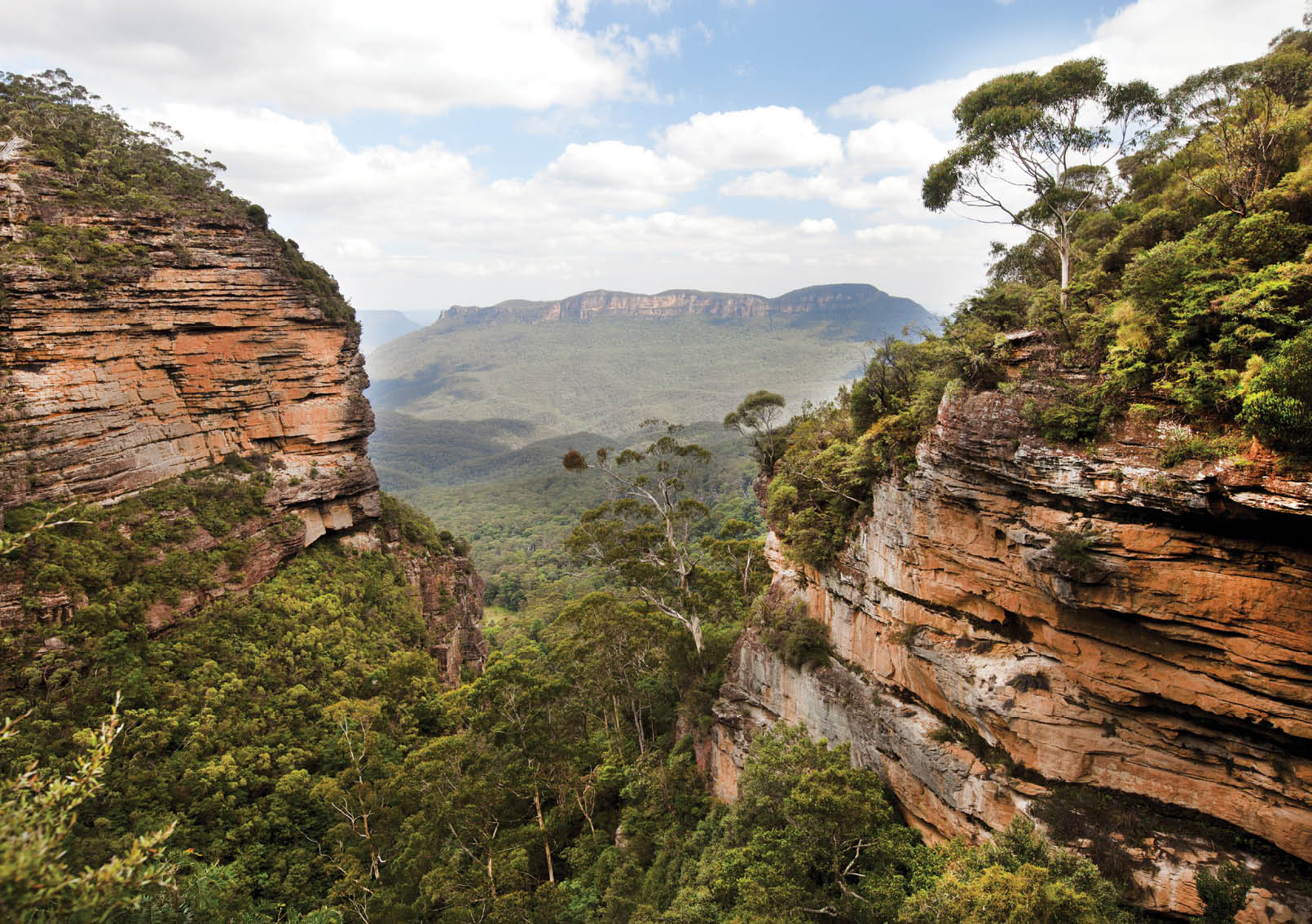

Blue Mountains LookoutNataiki
New South Wales is about to make sweeping changes to environment legislation that environment groups believe open the door to renewed land clearing and will place further pressure on beleaguered native species and ecosystems. Dr Oisín Sweeney of the National Parks Association of NSW explains.

The NSW Biodiversity Legislation Review:
Where It Came From
And Where It’s Going NextOisín Sweeney

102 | BWA April 2016


A root and branch review
In 2014 then Minister for the Environment, the Hon. Rob Stokes, initiated a review (“the review”) of four pieces of legislation related to biodiversity in NSW. The four-person review panel was chaired by Neil Byron of the Wentworth Group of Concerned Scientists and included Hugh Possingham (also of the Wentworth Group), Wendy Craik (Charles Sturt University) and John Keniry (Natural Resources Commission). The review produced 43 recommendations, all of which were accepted by the government just days before the last NSW election. And just three days before the election, the NSW Government also signed a Memorandum of Understanding with NSW Farmers that committed the NSW Liberals and Nationals to “enhancing the State’s biodiversity for the benefit of current and future generations” and developing “a new Biodiversity Conservation Act which takes an outcomes-focused and evidence-based approach to biodiversity”.. As will become clear, environment groups do not believe the new Act will deliver on this commitment.
What are the major changes from the old system?
1 The Native Vegetation Act 2003The most dramatic (and contentious) change is the repeal of the Native Vegetation Act 2003 (NV Act). The introduction of the NV Act was the first time that NSW had successfully managed to reduce broad-scale land clearing. A report by WWF calculated that approved clearing fell quickly from 88,000 hectares per year on average, to just 911 hectares. And, at a conservative estimate, the NV Act saved the lives of 53,000 native mammals per year. Furthermore, the money available for farmers to conduct on-ground environmental works went from $18 million in 2002-03 to $118 million in 2004-051. The implementation of the NV Act was heavily influenced by the Wentworth Group and, crucially, had the support of the NSW Farming Association and the broader community.
The Government is gambling that the focus on private land conservation incentives in the new Biodiversity Conservation Act will avoid
a reversion to broad-scale land clearing. Environment groups are not convinced because the money’s not yet in place and this strategy relies on ongoing government funding. Recent vacillating government policy on native vegetation in Queensland has been an environmental disaster.
2 OffsettingThe review recommended an expansion of offsetting to apply it to all types of development. A biodiversity offset is when the impact on a species or ecosystem by a development is mitigated by the protection of a similar species or ecosystem elsewhere. Although offsetting is generally supported as a last resort option by environment groups so as to achieve no net loss of habitat, there are major issues associated with it. These include the implicit assumption that it’s possible to recreate nature; difficulties in calculating baselines and benefits; difficulties in designing effective offsets and time lags between replacing the lost biodiversity with the offset which may negatively affect species—such as for hollow-dependent species for example.
One of the key foundations of offsetting is the concept of “like for like”. That is to say the habitat secured (the offset) should be the same as the habitat lost by development. The absence of an available like for like is most likely to occur in the case of rare species or ecological communities, and therefore a “red flag” situation should occur: the development is refused. So it is a major source of concern that the review states “the [offsets] fund should only move to a broader suite of offsetting options where like-for-like offsets are not available”. In the absence of any ecological relevance, offsetting moves from a last resort to a con. It simply facilitates development with a high environmental cost to proceed.
Offsetting is also deeply flawed in urban areas, as the offset will almost certainly occur a long way from the development. This renders the offset useless for the native species and the human community affected by the development. In urban areas, where green space is already at a premium, those affected will see trees and parks removed for development and offset in peri-urban areas
BWA April 2016 | 103

where space is available to secure an offset. This happened recently in the case of the fig trees in Randwick.
3 Climate changeThe review was remarkably quiet on the subject of climate change, in particular, regarding the interaction between climate change and land-clearing. This is a major concern because farmers will bear the brunt of climate change more than most as conditions become hotter, dryer and more unpredictable. Besides contradicting the Federal policy of reducing emissions from retaining native vegetation (the Emissions Reduction Fund has spent $673 million on carbon from avoided clearing2), research demonstrates that past land clearing has made south-eastern Australia dryer and hotter already. Neither farmers nor the wider community can afford for the new Act to ignore climate change.
So what happens next?
After having provided detailed analysis of the review and consulted for over eight months, environment groups walked away from consultations in mid-February. This hasn’t been the only fall-out: Neil Byron resigned from the Wentworth Group shortly after the review was published. Remember that phrase “evidence-based”? Well, it wasn’t. No matter what input was provided, it was apparent that the new legislation was pre-determined to suit some extreme elements
of the Government. The groups have since formed an alliance called Stand Up For Nature, and will redirect their time and resources to informing the community of the inadequacy of the legislation in order to put pressure on more moderate MPs.
How you can help
It’s really important that politicians feel the heat on this, and the only way that will happen is if the community mobilises. The Stand Up For Nature website has lots of resources to help you get involved, please make use of them! Follow and share proceedings on Facebook and use the hashtag #StandUp4Nature on Twitter. These “reforms” are a major threat to our shared environment: we need to show Mike Baird that we care.
1 Wentworth Group of Concerned Scientists: Submission to Biodiversity Legislation Review Panel. September 2014.
2 Native vegetation abatement has accounted for 51.3 million tonnes of emissions reductions. At $13.12 per tonne the amount paid by taxpayers has been $673 million.
Oisín is the Senior Ecologist for the National Parks Association of NSW Inc. He is one of several people who have been closely involved in developing the environment group’s response to the biodiversity review. He lives on the south coast of NSW and enjoys getting out and about in nature with his family.
Leura Cascades, Blue MountainsAmidala
104 | BWA April 2016